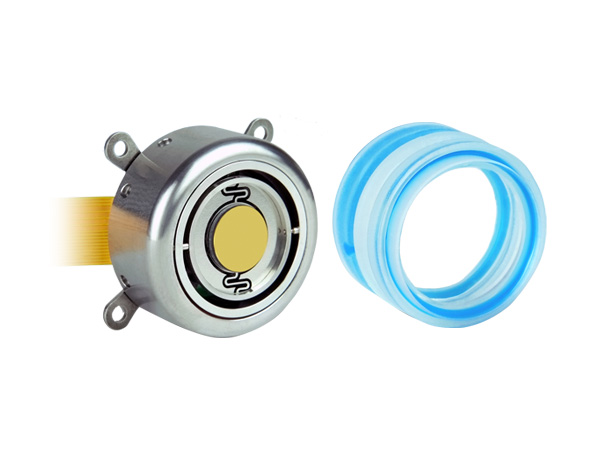
We are developing 2D beam steering solutions that can be used in reflection mode (2D mirror) or in transmission mode (tunable prism).
Whether in R&D or in product development, our disruptive 2D beam steering solutions offer completely new design and integration possibilities. They can be used in reflection mode (2D mirror) or in transmission mode (tunable prism).
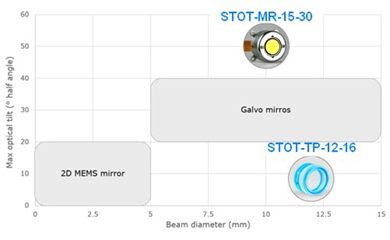
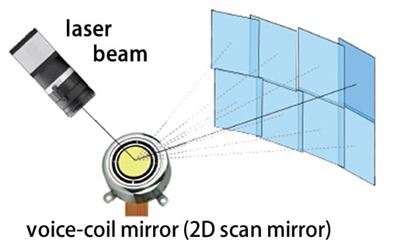
Main features:
2D beam deflection with a single optical element
Large clear apertures and beam angles
Compact & lightweight
Our dual axis mirrors (called as voice-coil mirror, scan mirror, beam steering mirror) offer the benefit of large deflections and large mirror size in a compact package. The actuator is based on proven technologies. A built-in position feedback allows it to be accurately controlled with a standard PID controller. The virtual rotation point of our 2D mirrors is close to the mirror surface which makes 2D scanning straight forward. Applications range from automotive (LiDAR, dynamic headlights, ADAS) and vision (field-of-view expansion, zoom) to biometric (eye-tracking), diagnostics and 3D printing.
Our tunable prism (TP) is suitable for optical alignment and beam-steering in transmission. The core element can be combined with your preferred actuation method and achieve a compact form factor. The low absorption makes it suitable for high-power applications. Thanks to the low dispersion liquid it can also be used for polychromatic applications.
Combining a 2D mirror for x/y with an electrically focus tunable lens allows you to direct your laser beam spot precisely and fast at any point within the addressable volume. This can be of interest for dynamic headlights, diagnostic and spectroscopic devices and 3D printing.

STOT-MR-15-30, STOT-MR-10-30
Compact, fast and precise beam steering
Our dual axis mirror series (called as beam steering mirror, scan mirror, voice-coil mirror) is the ideal choice for applications that require a large field of view combined with a compact form factor. With a package size of 30 x 14.5 mm it achieves up to ±25° mechanical tilt, corresponding to ± 50° optical deflection. The mirrors contain a position feedback system enabling accurate control of deflection angle within ±100 mrad using a standard PID controller.
In addition to the popular quasi-static version, two resonant versions are available: First, a single axis resonant mirror. Second, a linear axis combined with a perpendicular resonant axis. In contrast to galvo mirror heads, the rotation point is very close to the mirror surface. The mirrors are available for use with light in different wavelength ranges such as UV, VIS, and NIR.
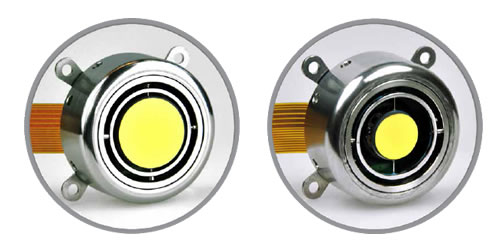
Advantages
Large 2D scan angle
Compact
Precise
Applications
Automotive (LiDAR, dynamic headlights, ADAS)
Vision (field-of-view expansion, zoom)
Biometric (eye-tracking) , diagnostic equipment & 3D printing
| Specifications | STOT-MR-15-30 | STOT-MR-10-30 |
| Scan direction | bi-axial | bi-axial |
| Mechanical tilt angle | ±25° X axis; ±25° Y axis | ±25° (slow) X axis; ±12.5° (fast) Y axis |
| Mirror diameter | 15 mm | 10 mm |
| Resolution (closed loop) | <5 mrad | <5 mrad |
| Repeatability RMS (typical) | 30 - 100 mrad | 30 - 100 mrad (slow) X axis |
| Full scale bandwidth | 20 Hz | 20 Hz (slow) X axis; 280 Hz (fast) Y axis |
| Mirror coating | gold, protected silver | gold, protected silver |
| Mirror reflectivity (gold coating) | avg >97% for NIR | avg >97% for NIR |
| Mirror flatness (P-V) | l/2 | l/2 |
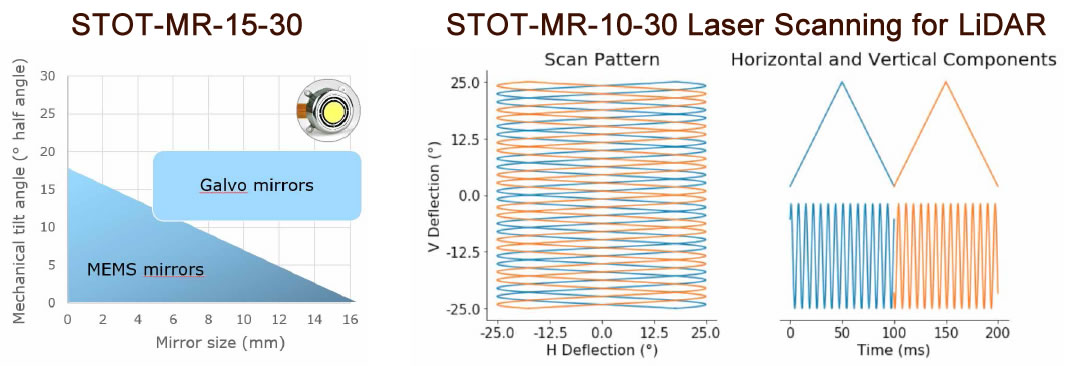
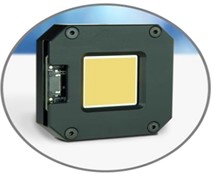
Our FMR devices have been designed with fine-tilt, high-angular resolution applications in mind. With a large clear aperture of 20x20mm, they can scan various beam patterns at up to 250Hz bandwidth with a ±2.3mrad tilt range. Together with ICC-4C-2000 Industrial Current Controller, the STOT-FMR-20 is a plug-and-play fine steering solution.
Main features:
• One large optical surface for 2 DOF motion
• Linear (current vs angle)
• Bearingless design – no particles generated, no wear, no friction
• Suitable for high power laser applications
Applications:
• Laser soldering and welding
• Fine 2D beam alignment (e.g. in laser cavities)
• Lissajous scanning
The following table summarizes the main specifications of the STOT-FMR-20:
Part number | Mirror size | Mechanical tilt angle | Weight | Device dimensions |
STOT-FMR-20 | 20*20mm | ±5.2mrad | 53 g | 50.8 x 50.8 x 12 mm |
Performance specifications
Motion pattern | 2D programmable |
Position control | Open loop |
External sensor for feedback control | Can be added |
Scale drift | 1000 ppm/K |
Resolution (with ICC-4C-2000) | 4 µrad |
Static motor constant | 17.5mrad/A |
Dynamic motor constant | 1.0°/A |
Bandwidth (sine wave, ± 2.3 mrad) | 130 ± 5 Hz |
Optical Specifications:
Surface finish Protected gold, dielectric NIR, custom
Reflectivity 0-45° AOI
Protected gold >95%, at 800-2000 nm
Dielectric NIR >98%, at 750-1100 nm
Surface quality 5/ 5x0.4; L1x0.06; C3x0.25 ISO norm 10110, equivalent to scratch-dig 60/40
Mirror flatness 2 λ (1100 nm)
Control:
The STOT-FMR-20 is controlled with ICC-4C-2000 industrial 4-channel controller, together with the ICC-4C-2000 extension kit (adapter board). One ICC-4C-2000 has four output channels and supports two STOT-FMR-20 devices. See separate datasheet for more information.
For the device control, please install the latest software and firmware from our website:
• Cockpit (GUI)
• ICC-4C-2000 Firmware
• ICC-4C SDK in Python or C#
Reflectivity Static response
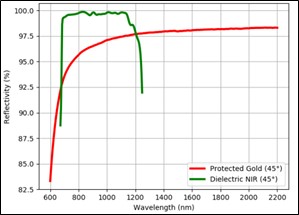
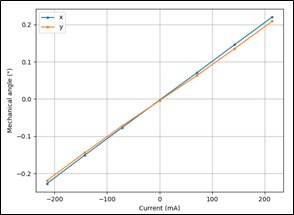
Frequency response
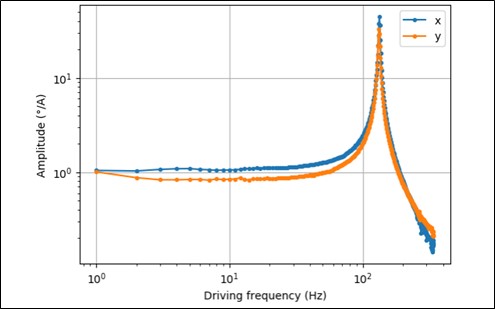
Step response
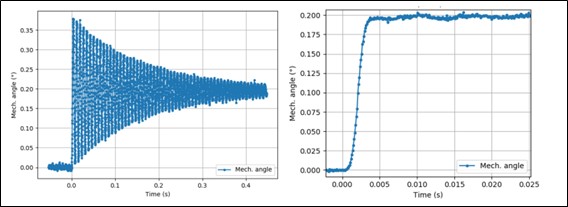
The unmounted version of the STOT-FMR-20 simplifies the integration of the device into other systems.
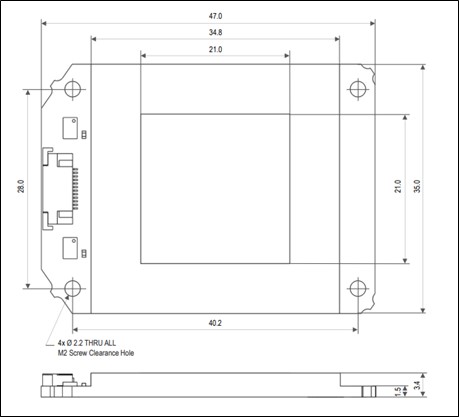
The STOT-MR-E-2 driver is an ideal solution for driving the MR-series 2D beam steering mirrors. It consists of a base unit containing control electronics and an integrated head unit with mirror and driving electronics. The driver in the standard version with housings can be used for testing and proof of concept work. The boards without housing are available as OEM version for integration with system electronics.
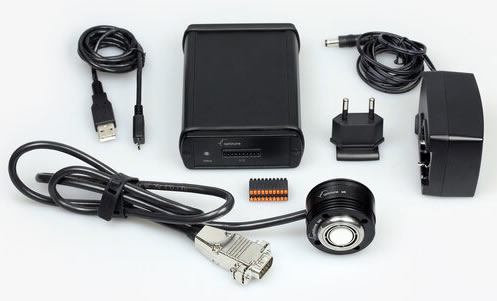
The driver is compatible only with our mirrors and allows various operation modes. The driver can be controlled from a host PC via our user interface. In addition, the driver offers the following communication interfaces:
USB, UART
SPI (I2C available as customization)
Analog input (± 5 V)
Software SDKs for Python and C# are available. The driver is RoHS, REACH and CE certified.
| Standard products | Mirror type included | Components included |
| STOT-MR-E-2 Base unit | N/A | STOT-MR-E-2 Base unit controller box, power supply, USB cable |
| STOT-MR-E-2 Mirror head gold | MR-15-30-G-25x25D | Mirror head (incl. mirror and cable) protection cap, heatsink |
| STOT-MR-E-2 Mirror head silver | MR-15-30-PS-25x25D | Mirror head (incl. mirror and cable), protection cap, heatsink |
| STOT-MR-E-2 Mirror head custom | MR-C-15-30 (custom mirror), or resonant mirror MR-10-30-G/MR-10-30-PS | Mirror head (incl. mirror and cable), protection cap, heatsink |
| STOT-MR-E-2 OEM version | N/A | Carrier board (without housing), CPU board (without housing), proxy board (without mirror head), connection cable |
Tilt vs Mirror Size-competing technologies
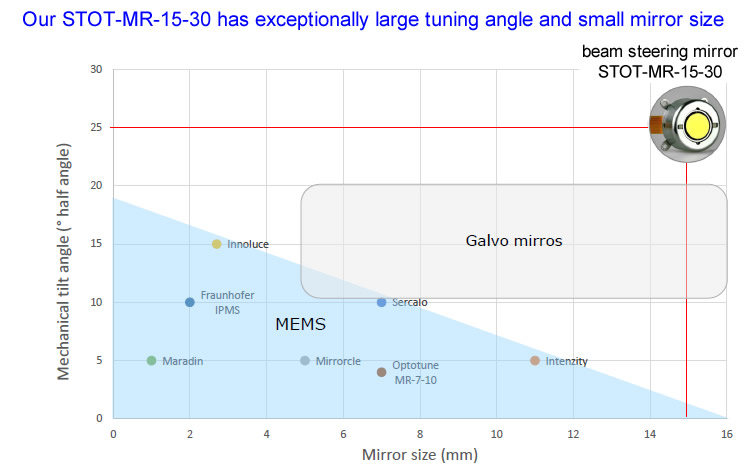
Voice-coil Mirror (VCM, beam steering mirror) in Comparison to MEMS and Galvo
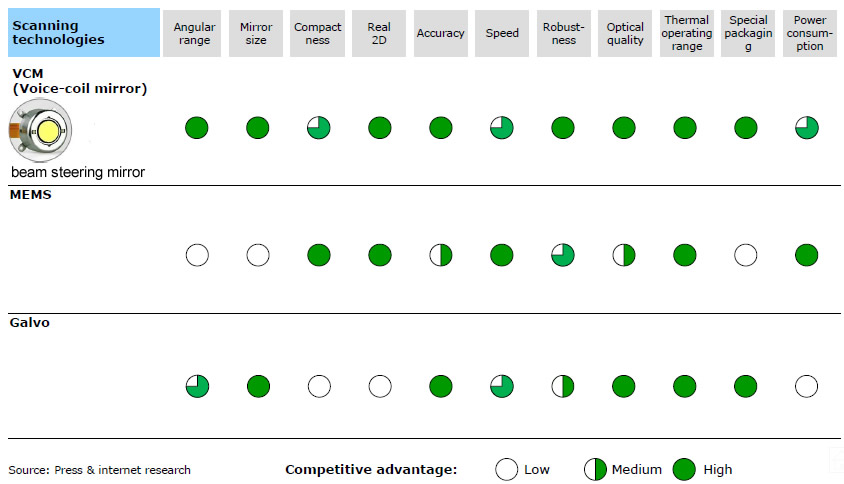
A leading supplier and manufacturer of a wide range of photonics products such as lasers,laser parts & machines.
Office: 10 Bukit Batok Crescent #07-02 The Spire Singapore 658079
Tel: +65 63167112
Fax: +65 63167113
Whatsapp: +65 91904616
